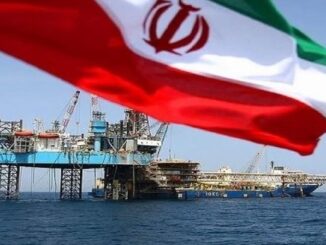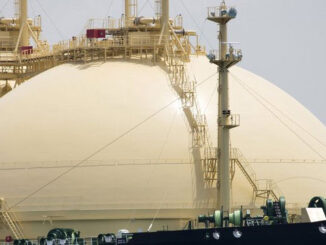
In a stark warning amid escalating geopolitical tensions, Russian President Vladimir Putin has cautioned that global oil prices could surge beyond $100 per barrel if Russian crude supplies are cut off from international markets.
Speaking on the sidelines of recent discussions, Putin emphasized that the absence of Russia’s oil would disrupt the global energy system, leading to immediate price spikes.
This statement comes as Western nations intensify efforts to reduce reliance on Russian energy exports, including oil, natural gas, liquefied natural gas (LNG), and coal, in response to ongoing conflicts and sanctions.
But what would the world look like without these supplies?
Let’s dive into the potential ramifications for crude oil markets, energy prices, consumer impacts, and the regions most vulnerable to such a disruption.
The Role of Russia in Global Energy Supply
Russia remains a powerhouse in the energy sector, holding significant shares across multiple commodities. As the world’s second-largest producer of crude oil and condensate, Russia accounted for substantial global output in 2024, with exports increasingly redirected to Asia amid Western sanctions.
By 2025, around 63% of its crude oil exports have shifted to Asia and Oceania, including major buyers like China and India.
In natural gas, Russia is the top global exporter, producing 762 billion cubic meters (bcm) annually and exporting about 210 bcm via pipelines.
LNG exports have also grown, despite sanctions, capitalizing on rising demand in shifting markets.
For coal, Russia’s exports have declined from pre-sanction levels, but it still supplies key Asian markets like China, India, and South Korea, offsetting losses in Europe.
As of October 3, 2025, crude oil prices hover around $61 per barrel for Brent and WTI benchmarks, down from earlier highs but still sensitive to supply shocks.
Removing Russia’s contributions—estimated at 10-12% of global oil supply—could trigger a cascade of effects across interconnected energy markets.
Crude Oil Markets: A Hypothetical Supply Shock
If all Russian crude were abruptly removed from the global market, the immediate fallout would be severe. Analyses suggest that a 50% reduction in Russian exports could drive world oil prices up by $40 per barrel, pushing benchmarks well above $100.
S&P Global has warned that fully excluding Russian oil would “turn price dynamics upside down,” potentially lowering long-term averages to $55-60 per barrel in some scenarios but causing short-term volatility and spikes in the interim.
Putin’s own assessment aligns with this, predicting an instant jump past $100 as markets scramble to replace lost volumes.
The global oil market’s tightness, exacerbated by Ukrainian drone strikes on Russian refineries and export infrastructure, has already strained Russia’s capacity to divert crude abroad.
Production has fallen from 11 million barrels per day (bpd) pre-2020 to about 9.2 million bpd in mid-2025, with long-term challenges from sanctions and declining investments.
Without Russian supply, OPEC+ nations like Saudi Arabia might ramp up output, but logistical bottlenecks and political hesitations could delay relief, prolonging elevated prices.
Natural Gas and LNG: Europe’s Lingering Vulnerability
The removal of Russian natural gas and LNG would hit even harder in certain regions. Russia supplied 45% of the EU’s gas imports in 2021, but by 2024, this had dropped to 19% for gas and 3% for oil due to diversification efforts.
Still, a complete cutoff—projected at 35-39 bcm in pipeline supplies to the EU in 2025—would require rapid increases in LNG imports from alternatives like the U.S., which is poised to expand with new liquefaction plants starting in 2025.
Global LNG supplies are expected to grow rapidly from 2025 onward, but short-term shortages could spike European gas prices, as seen in early 2025 when Russian transit via Ukraine ended, offset only by higher storage withdrawals.
Russian LNG revenues have fluctuated, dropping 19% month-on-month in July 2025 to €30 million per day, reflecting volume declines.
A full ban could force buyers in Asia and Europe to compete fiercely, driving up spot prices and affecting power generation costs worldwide.
Coal: An Industry Already in Crisis
Russia’s coal exports, once a major revenue stream, have been hammered by sanctions and shifting demand. Exports to Europe halved from 2020 to 2024, with Asia absorbing the slack—China alone took 44% of Russia’s coal from December 2022 to July 2025.
However, the sector is collapsing internally, with losses reaching $1.7 billion in the first five months of 2025 and projections of $3.8-5.0 billion for the year.
Global metallurgical coal exports are set to decline 7% to 345 million tonnes in 2025, compounding Russia’s woes.
Removing Russian coal entirely would disrupt power and steel markets in Asia, where low profitability and rail bottlenecks already strain supplies.
Prices could rise modestly, but the bigger impact would be on Russia’s economy, with sector debt ballooning to $18.6 billion.
Price Surges, Consumer Pain, and Most Affected Markets
Higher energy prices from a full Russian export removal would ripple through economies, fueling inflation and squeezing consumers. Past analyses of the Russia-Ukraine conflict show soaring prices led to economic risks, with crude topping $100 per barrel in early 2022.
In Europe, an embargo on Russian fuels has already driven up welfare losses, with energy costs rising substantially.
Globally, consumers could face higher gasoline, heating, and electricity bills, exacerbating cost-of-living pressures.
The most impacted markets include:
Europe: Heavily reliant on residual gas and LNG, facing supply gaps and price volatility.
Asia (China, India): Major importers of redirected Russian oil, gas, and coal; disruptions could hike import costs and affect industrial output.
Global South (e.g., Brazil): Distant markets hit by reduced fuel exports from Russia, leading to shortages.
Sanctions have already slashed Russia’s revenues—enforcement of the oil price cap could have cut exports by 11% since its introduction.
Yet Russia earns hundreds of billions annually from energy, underscoring the challenge of fully isolating it.
Wrapping Up: A Precarious Balance
Putin’s warning highlights the delicate interdependence of global energy markets. While diversification has reduced some vulnerabilities—EU Russian oil imports fell from 29% in 2021 to 2% in mid-2025— a total removal of Russian supplies could indeed propel oil past $100, with cascading effects on gas, LNG, and coal.
For consumers, this means higher costs and potential economic slowdowns, while markets in Europe and Asia bear the brunt. As tensions persist, the push for renewables and alternative suppliers gains urgency, but in the short term, the world remains tethered to Russia’s energy lifeline. Stay tuned to Energy News Beat for more insights on these evolving dynamics.
Got A Tax Burden in 2025?
Crude Oil, LNG, Jet Fuel price quote
ENB Top News
ENB
Energy Dashboard
ENB Podcast
ENB Substack






